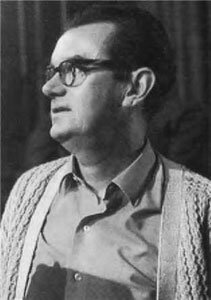FILM FEST- Puppet perfection: Morris helped create a masterpiece
By 1980, Academy Award-winning cinematographer Oswald Morris had shot films in every conceivable genre: all-star WWII epics (The Guns of Navarone); black comedy (Stanley Kubrick's Lolita); literary period pieces (Moby Dick); musicals (Oliver!); and James Bond movies (The Man with the Golden Gun).
But despite these wildly disparate credits, he managed to end his career on a decidedly different note: shooting Muppet creator Jim Henson's The Dark Crystal.
Morris, 91, recently spoke with the Hook about his experiences working on Henson's all-puppet fantasy epic.
Henson, for whom he had previously photographed The Great Muppet Caper, "was wonderful to work with," Morris says, "very creative, very dedicated."
The Dark Crystal tells the story of the fulfillment of an ancient prophesy in a wondrous world of mystics, monsters, and everything in between. The film employs a complex variety of puppets, models, and special effects– but no human actors– with awe-inspiring results.
Morris calls the work "one of the most exciting films I've ever done," due in large part to the fact that he was helping to blaze a new cinematic trail. "We had nothing to refer to, so the challenge was tremendous," he says, "but it was the same for all of us: everybody was trying something new, spearheaded by Jim and [co-director] Frank Oz."
The filmmaking process was painstaking, Morris recalls: "You cannot rush that sort of thing, and Jim would not be rushed."
Thus, patience was key. "Sometimes, it would get boring," he says, "but when we came to shoot, it had to be absolutely perfect, or Jim would reject it."
Morris says that the camera operator, Derek Brown, had an especially hard time because Henson was fanatical about "not revealing, in any shape or form, the way he was manipulating the puppets."
Henson did certain hand movements with sticks attached, he says, but "The minute he saw a stick, we would have to do it all again."
To give the film its unique "fairy tale" look, Morris used the Lightflex system– a process that involves reflected light passing through glass and then bouncing onto the camera lens. Then he exposed the film a bit to give it a "slightly unreal effect." Color gels over the glass highlighted the colors of sets or miniatures.
Since Henson produced the film as well as co-directed, his crew had tremendous creative leeway. "We didn't have a producer down our necks all the time," Morris says.
There were two scales of characters in the film, Morris says, everything from the giant Garthem to the huge Land-striders and down to Jen and Kira, the young Gelfling lovers.
But Henson's intense commitment came with a price. Morris believes it was overwork that led to his untimely death from pneumonia in 1990. While Henson was producing and co-directing The Dark Crystal, Morris recalls, the Muppets' creator worked five days on the film with his crew in London, flew to New York late each Friday night, worked all weekend there, flew back to London Sunday night and immediately returned to the studio to repeat the process.
"In the end it killed him, I'm sure," Morris says.
Of the overall experience, Morris says, "Nobody will ever know, nor should they know, how difficult it was" to make the film. "This is a very important point– if it looks easy, we've done our job. If it looks difficult, then we've failed."
After filming wrapped, Morris retired. "I'd run out of scripts that gave me a challenge," he says.
Of course, after making The Dark Crystal, what wouldn't seem anticlimactic?
The Dark Crystal shows at 1pm Sunday, October 29, at the Regal Downtown theater.

Oswald Morris was the man behind the camera for Jim Henson's masterpiece, The Dark Crystal.
PHOTO BY BOB PENN
#